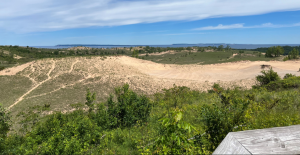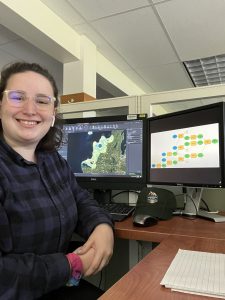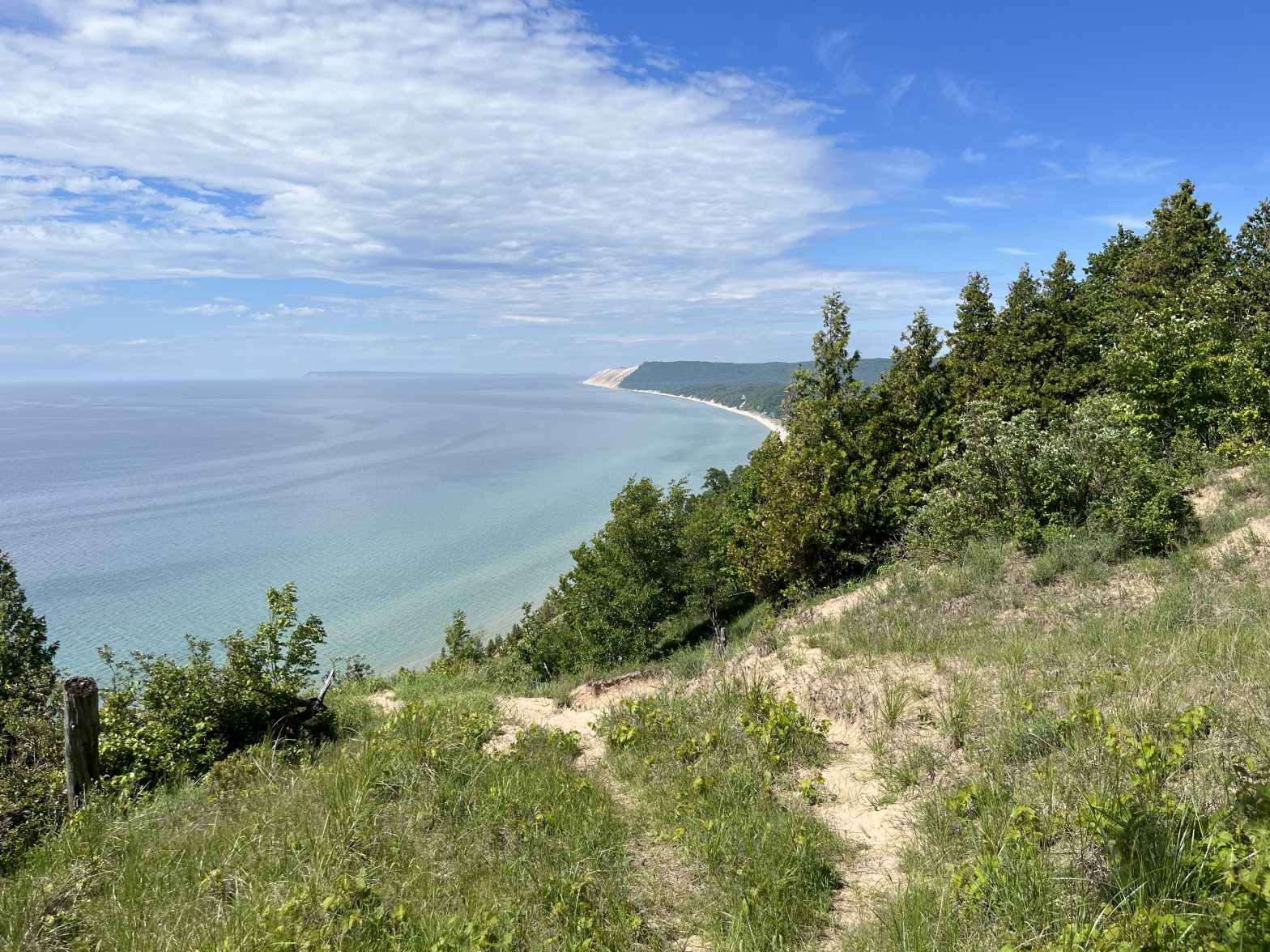
I am Meagan Fairfield-Peak and I am currently a Master’s student at University of Maryland Baltimore County, where I focus my GIS experience in forest restoration monitoring, which aligns nicely with the GIS prioritization model that I will create during this internship. Since moving to Sleeping Bear Dunes National Lakeshore (SLBE) I have been able to deep dive into the literature of invasive species and priority management, along with the GIS data that has been collected and maintained by the park and their partners.
Like most natural areas, SLBE has ongoing projects and management plans in an attempt to control the variety of invasive plant species throughout the park. SLBE is in the northwest of the lower peninsula of Michigan and has a variety of landscapes from public beaches to steep 450ft tall dunes to dense deciduous forests. There is always something to be explored and researched! Unfortunately, throughout these landscapes, there are nonnative invasive plant species that are outcompeting native species and suppressing the growth of some rare plant species for the area.

This is where I come in! Within their Natural Resources Department at SLBE, there is an Invasive Plants and Restoration Team that works diligently to control the large variety of invasive plants throughout the park. Although sites are determined by the project leaders’ best judgment, currently there is not a specific definition of what sites are highest priority. Through ArcGIS Pro Model Builder, I will create a model that will consider a variety of criteria to identify areas of high priority for management. The criteria will include factors such as the invasive plants current impact, ability of becoming a pest, abundance within the park, ease of control as well as sub-criteria that will break down possible seed dispersal, proximity to rare species and much more.
As the summer continues, I will edit and enhance the priority model through data cleaning, additional data, as well as weighing the criteria. I will also ground truth sites and get project leads expert opinions to look at the accuracy of the model. Please come on back for more updates as this project progresses.

